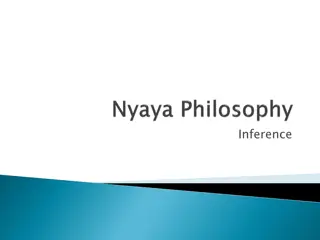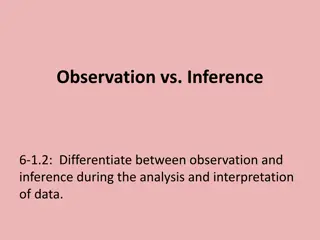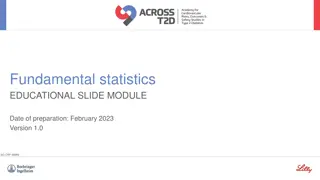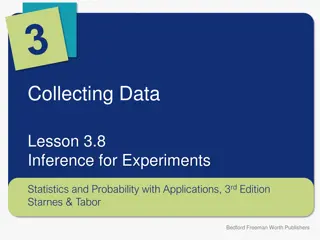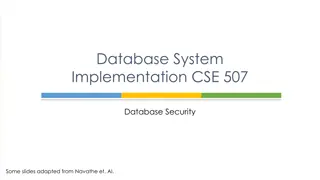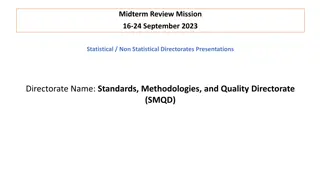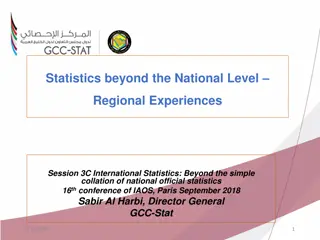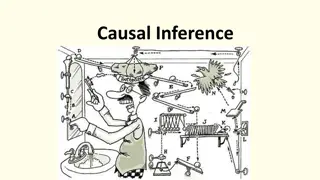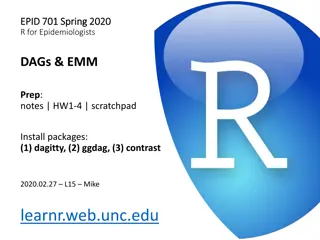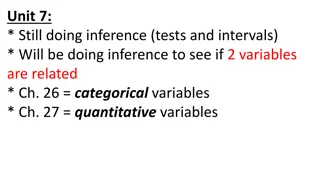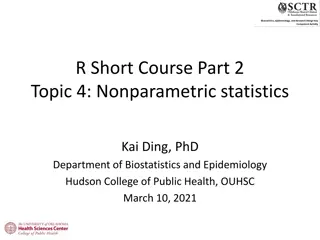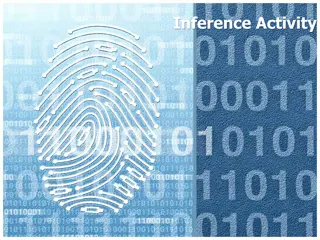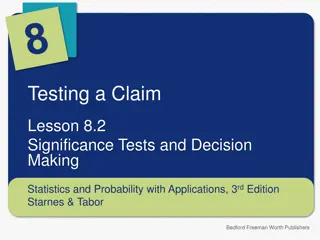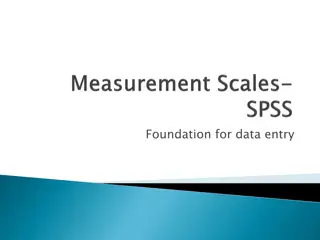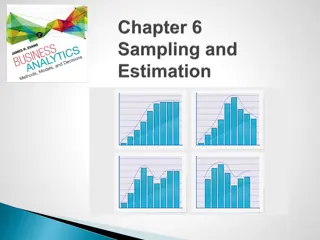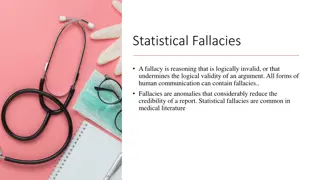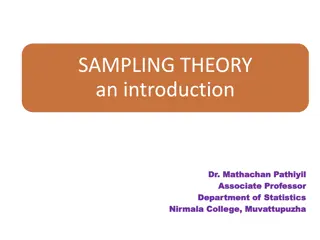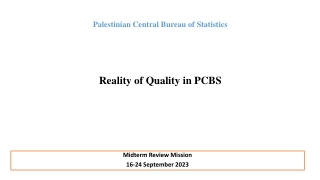Understanding the Scope of Inference in Statistical Studies
Statistical studies require careful consideration of the scope of inference to draw valid conclusions. Researchers need to determine if the study design allows generalization to the population or establishes cause and effect relationships. For example, a study on the effects of cartoons on children's executive function highlighted the importance of random assignment for causal inference. Evaluating ethical conduct in statistical studies is crucial for reliable results. Knowing when to infer about populations and cause-effect relationships enhances the quality of statistical analyses.
Download Presentation

Please find below an Image/Link to download the presentation.
The content on the website is provided AS IS for your information and personal use only. It may not be sold, licensed, or shared on other websites without obtaining consent from the author. Download presentation by click this link. If you encounter any issues during the download, it is possible that the publisher has removed the file from their server.
E N D
Presentation Transcript
Collecting Data Lesson 3.9 Using Studies Wisely Statistics and Probability with Applications, 3rdEdition Starnes & Tabor Bedford Freeman Worth Publishers
Using Studies Wisely Learning Targets After this lesson, you should be able to: Identify when it is appropriate to use information from a sample to make an inference about a population and when it is appropriate to make an inference about cause and effect. Evaluate if a statistical study has been carried out in an ethical manner. Statistics and Probability with Applications, 3rdEdition 2 2
Using Studies Wisely Researchers who conduct statistical studies often want to draw conclusions (make inferences) from the data they produce. The type of inference that can be made from a study depends on how the study was designed. The Scope of Inference Random selection of individuals allows inference about the population. Random assignment of individuals to groups permits inference about cause and effect. Statistics and Probability with Applications, 3rdEdition 3 3
Do all children react to cartoons the same way? Do all children react to cartoons the same way? The scope of inference The scope of inference PROBLEM: Recall the study on the effect of fast-paced cartoons on executive function (decision-making) in children (http://pediatrics.aappublications.org/content/early/2011/09/08/peds.2010-1919.full.pdf). The children were randomly divided into three groups: one group was shown a fast- paced cartoon, one group was shown an educational cartoon, and one group was given art supplies and instructed to draw pictures. All of the children spent 9 minutes watching the cartoon or drawing. Afterward, tests of executive function (decision-making) were given 30 minutes after the children finished watching or drawing. (a) Can the results of this study be generalized to all 4-year-olds? Explain. No, because the children in this study were not a random sample of 4- year-olds. They were volunteers. (b) Based on the study, is it reasonable to say that fast-paced cartoons cause a decrease in executive brain function? Explain. Yes, because the 4-year-olds were randomly assigned to watch fast- paced cartoons, watch educational cartoons, or to draw pictures. Note: The researchers were careful to conclude that their study only showed evidence of a temporary reduction in executive brain function, because the tests were administered 30 minutes after the treatments were given. Statistics and Probability with Applications, 3rd Edition 4 4
Using Studies Wisely This chart summarizes the appropriate scope of inference based on the design of a study. Statistics and Probability with Applications, 3rd Edition 5 5
Are my students playing minty mind games? Are my students playing minty mind games? Scope of inference Scope of inference PROBLEM: Mr. Tyson s students insist that their performance on tests will increase when they chew mint gum. Mr. Tyson is skeptical of this claim and suspects that there will be no difference in student performance on tests. Here are four possible study designs to address this question at your school. In each case, the response variable will be the test score on a general knowledge test designed by Mr. Tyson. What conclusion can we draw from each study? Explain. Statistics and Probability with Applications, 3rd Edition 6 6
Are my students playing minty mind games? Are my students playing minty mind games? Scope of inference Scope of inference PROBLEM: 1. Get all the students in your statistics class to participate in a study. Ask them whether or not they want to chew mint gum during the test, and divide them into two groups based on their answer to this question. The mean test score for students who chewed mint gum during the test is significantly higher than the mean test score for students who didn t chew mint gum during the test. With no random selection, the results of the study should be applied only to the statistics students in the study. With no random assignment, we cannot make any inferences about cause and effect. We can conclude that the students in the statistics class who chew mint gum during the test scored higher, on average, than those who do not chew mint gum, but we can t say the mint gum is the cause. Statistics and Probability with Applications, 3rd Edition 7 7
Are my students playing minty mind games? Are my students playing minty mind games? Scope of inference Scope of inference PROBLEM: 2. Select a random sample of students from your school to participate in a study. Ask them whether or not they want to chew mint gum during the test, and divide them into two groups based on their answer to this question. The mean test score for students who chewed mint gum during the test is significantly higher than the mean test score for students who didn t chew mint gum during the test. With random selection, the results of the study can be applied to the entire population in this case, all the students at the school. With no random assignment, we cannot make any inferences about cause and effect. We can conclude that students at the school who chew mint gum during the test have higher test scores than those who do not chew mint gum, but we can t say mint gum is the cause. Statistics and Probability with Applications, 3rd Edition 8 8
Are my students playing minty mind games? Are my students playing minty mind games? Scope of inference Scope of inference PROBLEM: 3. Get all the students in your statistics class to participate in a study. Randomly assign half of the students to chew mint gum while taking the test, and have the remaining half take the test without chewing mint gum. The mean test score for students who chewed mint gum is significantly higher than the mean test score for students who didn t chew mint gum during the test. With no random selection, the results of the study should be applied only to the statistics students in the study. With random assignment, we can make an inference about cause and effect. We can conclude that chewing mint gum while taking the test causes students to score higher, on average, but only for the statistics students who took part in the study. Statistics and Probability with Applications, 3rd Edition 9 9
Are my students playing minty mind games? Are my students playing minty mind games? Scope of inference Scope of inference PROBLEM: 4. Select a random sample of students from your school to participate in a study. Randomly assign half of the students to chew mint gum during the test, and have the remaining half take the test without chewing mint gum. The mean test score for students who chewed mint gum during the test is significantly higher than the mean test score for students who didn t chew mint gum during the test. With random selection, the results of the study can be applied to the entire population in this case, all the students at the school. With random assignment, we can make an inference about cause and effect. We can conclude that chewing mint gum causes students to score higher, on average, for all the students at the school. Statistics and Probability with Applications, 3rd Edition 10 10
Using Studies Wisely Although randomized experiments are the best way to make an inference about cause and effect, in some cases it isn t ethical to do an experiment. Basic standards of data ethics must be obeyed by all studies that gather data from human subjects, both observational studies and experiments. Basic Principles of Data Ethics All planned studies must be reviewed in advance by an institutional review board charged with protecting the safety and well-being of the subjects. All individuals who are subjects in a study must give their informed consent before data are collected. All individual data must be kept confidential. Only statistical summaries for groups of subjects may be made public. Statistics and Probability with Applications, 3rd Edition 11 11
How common is underage drinking? How common is underage drinking? Data ethics Data ethics PROBLEM: Students in a statistics class wondered what proportion of their schoolmates had consumed alcohol at least once within in the last week. The statistics students developed a computer program that would ask this question and record answers anonymously. The students then sought permission from the superintendent and school board, who reviewed their methods and approved. A letter was mailed home to all students in the district explaining the research study, the methods used, and guaranteeing that all answers would be recorded anonymously. The letter stated that the results of this study would be discussed at the next school board meeting and that students could choose not to participate. If they chose to participate, the parents and students had to sign the letter and return it to the office. Was this study carried out ethically? Explain. Yes. The school board, which acts as the institutional review board for high schools, approved the methods of this study, and all participants were informed of the methods and provided written consent. Because the individuals responses were anonymous, the results are confidential. Statistics and Probability with Applications, 3rd Edition 12 12
LESSON APP 3.9 Is foster care better for children than an orphanage? Do abandoned children placed in foster homes do better than similar children placed in an institution? The Bucharest Early Intervention Project found that the answer is a clear Yes. The subjects were 136 young children abandoned at birth and living in orphanages in Bucharest, Romania. Half of the children, chosen at random, were placed in foster homes. The other half remained in the orphanages. (Foster care was not easily available in Romania at the time and so was paid for by the study.) 1. What conclusion can we draw from this study? Explain. 2. The children in this study were too young to pro- vide informed consent. Does this make this study unethical? Explain. Statistics and Probability with Applications, 3rd Edition 13 13
LESSON APP 3.9 Is foster care better for children than an orphanage? 1. What conclusion can we draw from this study? Explain. 2. The children in this study were too young to pro- vide informed consent. Does this make this study unethical? Explain. Statistics and Probability with Applications, 3rd Edition 14 14
Using Studies Wisely Learning Targets After this lesson, you should be able to: Identify when it is appropriate to use information from a sample to make an inference about a population and when it is appropriate to make an inference about cause and effect. Evaluate if a statistical study has been carried out in an ethical manner. Statistics and Probability with Applications, 3rd Edition 15 15






